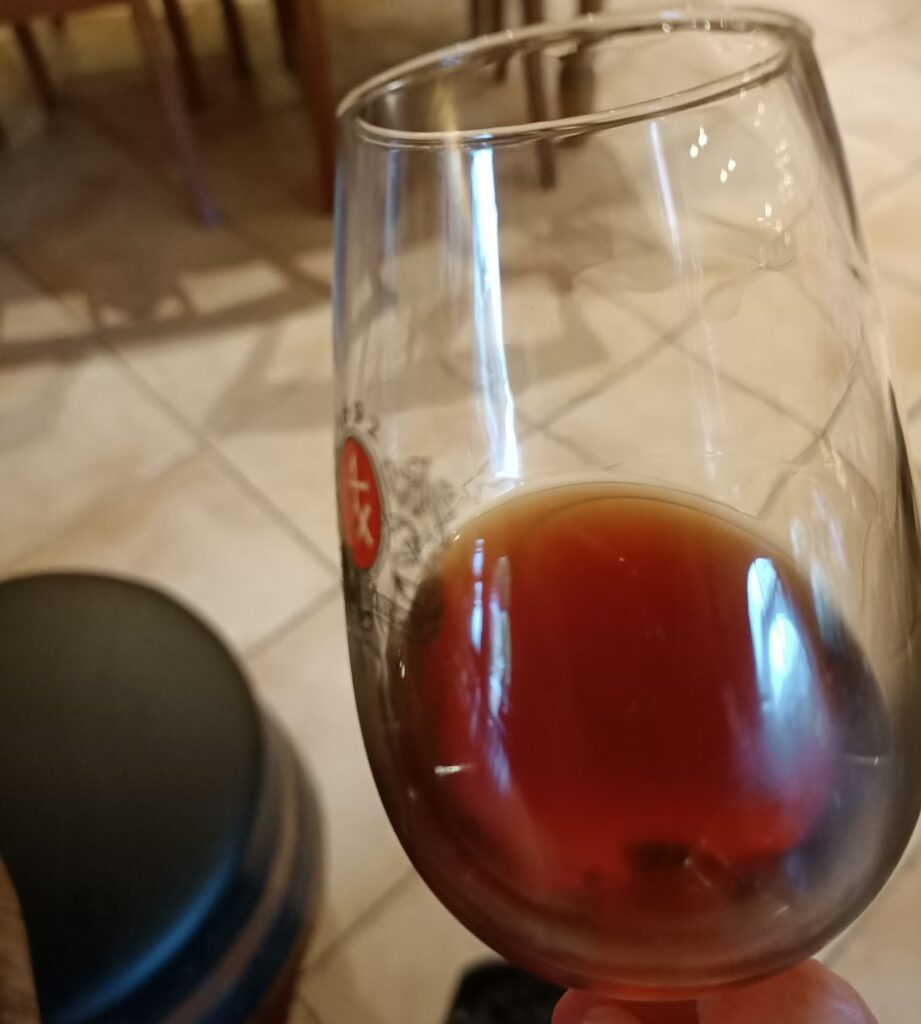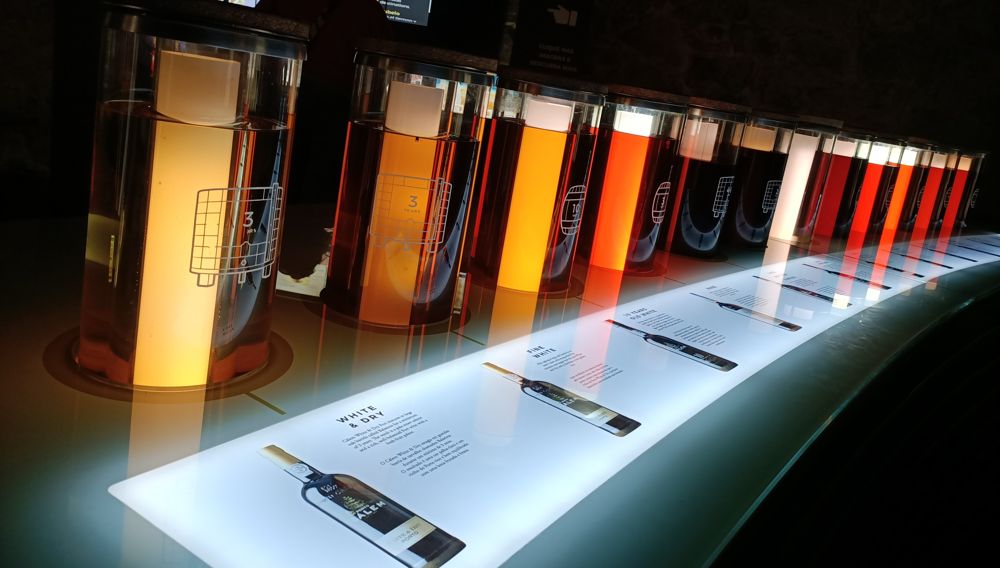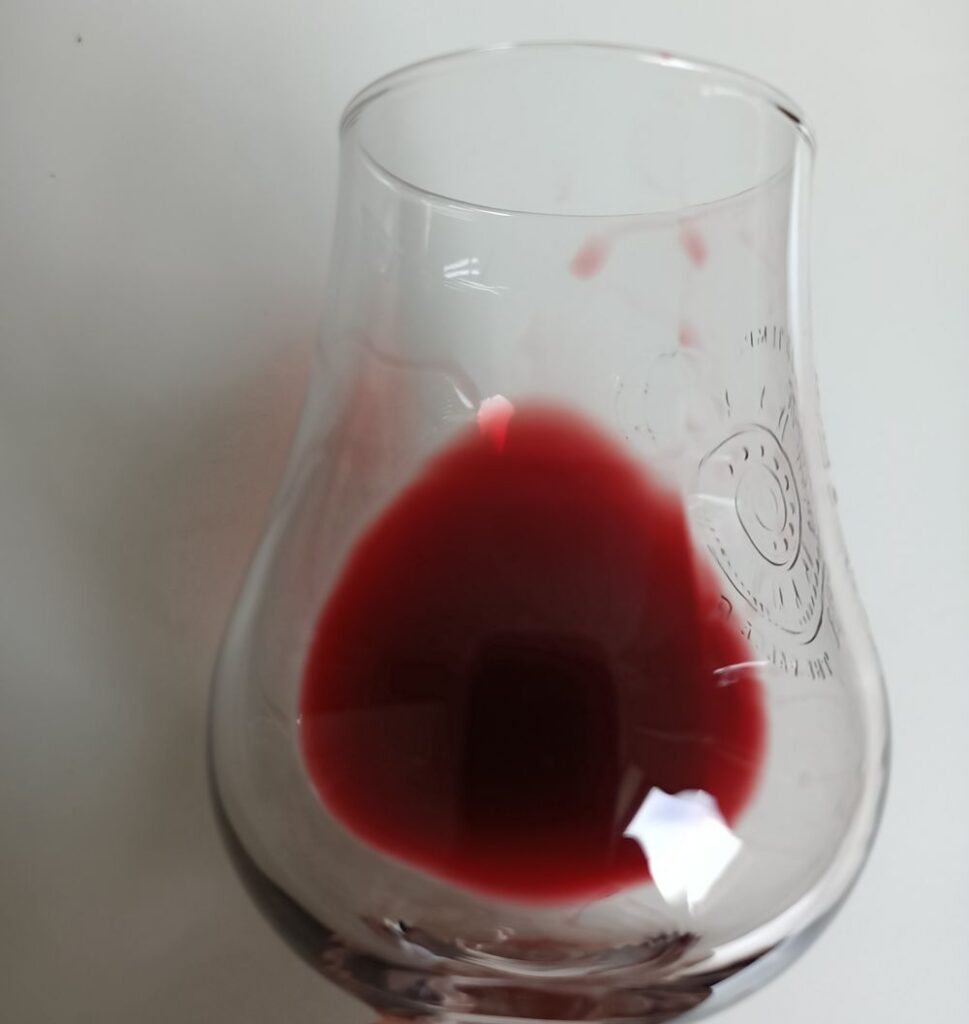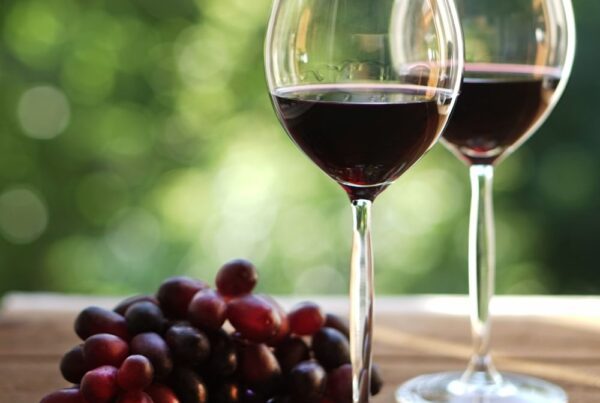Is Port wine red, pink, brown or yellow?
It’s all of the above and more.
In this article, you will learn what color Port wine is, how Port gets its color and why it has such a variety of colors.
Key takeaways:
- Young Ruby Port is a vibrant ruby color. Aged Ruby Ports are garnet in color.
- Tawny Port ranges in color from tawny to brown.
- White Port can be straw, golden or amber in color.
- Rosé Port is pink.

What is Port wine?
Port is a fortified wine made from a blend of black grapes varieties. A small amount of White Port is also made from white grape varieties.
Fortified wines are wines that have additional alcohol added.
A grape-derived spirit is added to partially fermented grape juice. The alcohol in the spirit kills off the yeasts and stops the fermentation. The result is a sweet wine that is high in alcohol.
There are different styles of Port that come in a variety of colors and flavors.

What gives Port wine its color
The color in wine, including Port wine, comes from the grape skins; however, winemaking techniques and ageing also influence the color of wine.
Wine color and grape skins
The color from red and rosé wines comes from the skins of black grapes. To extract the color from the grape skins, the grapes are crushed and the crushed grapes and juice are fermented together.
The fermentation process extracts both color and tannins from the skins. Tannins provide structure to wine, as well as a mouth-drying effect.
The temperature and length of fermentation both influence how much color and tannins are extracted.
Grape variety also influences the amount of color in wine. Thick-skinned grape varieties produce wine with more color and tannins. Port wine is made from a blend of different varieties and many of them are thick-skinned. This is why Port wine is a deeply colored wine.

Winemaking techniques that influence Port wine color
The fermentation process for Port wine is short but intense, typically just 24-48 hours. Port wine uses more vigorous extraction techniques than regular wine.
Port wine extraction techniques include:
Foot treading
The first stage of foot treading is called the “corte” or cut. A team of workers form a line, standing close together, and advance slowly across the lagar treading and squashing the grapes in unison.
The grapes are trodden like this for two hours crushing the grapes into a thick soupy liquid.
The second stage of treading is called “liberdade” or freedom where the treaders work individually. The treaders move around the lagar ensuring the grape skins are evenly distributed in the juice.
The treading process is controlled by the winemaker, but treading can often have a festive atmosphere with music and dancing.
Foot treading is labour intensive and therefore expensive, so it is not widely used anymore; however, it is still used to make some premium Port wines.

Autovinifiers
An early automated way to extract grape juice, autovinifiers are still widely used today. They work by putting the crushed grapes into sealed vats. The fermentation of the grapes creates CO2 which increases the pressure in the vat pushing the juice up through pipes into a holding tank.
When the pressure is released via an automatic valve, the wine flows back down into the tank over the cap (the grape skins that float to the top). The valve resets and the process repeats itself.
Robotic lagares and piston plungers
Both systems are designed to mimic foot treading as closely as possible. Robotic pistons and “feet” press and punch down crushing the grapes.
These systems are widely used in the production of premium wines and are considered by many to be as effective as foot treading.

Port wine color and aging
How wine is aged and for how long also influences the color of wine, including Port wine.
Ruby Port wine color and ageing
Ruby Ports are aged in large vats with minimal contact with wood and oxygen. Minimal contact with wood and oxygen means that there isn’t a significant change in the color of the wine.
The wine is aged in the vats for different periods of time, depending on what type of Port the winemaker wants to create.
Ruby Port is a vibrant ruby color. It is a sweet, full-bodied and deeply colored wine. The color and flavors of Ruby Port develop and change as it ages.
Young Ruby Port is ruby in color with primary fruit flavors such as red and black berries, as well as chocolate and spices like cinnamon.
Port wines that have been bottle aged for long periods, such as Vintage Port are garnet in color and develop tertiary flavors, such as cooked fruit, prune and leather notes.
Note: Garnet means the wine is predominantly red with brownish hues.

Tawny Port wine color and ageing
Tawny Port is aged in small barrels, called “pipas” that are part-filled with wine. They pipas are approximately 5/6 full, ensuring the wine is in contact with oxygen.
It is this contact with the oxygen and wood that creates the oxidative notes in Tawny Port, as well as its color, which can range from Tawny (brownish) to brown color.
The longer a Tawny Port is aged, the darker and browner the color will become.
The smaller surface area of the pipas also ensures more contact with wood than in a large vat. This contact with wood also influences and changes both the color and the flavors of the wine.

White Port wine color and ageing
White Port is made with a blend of white grapes varieties.
Most White Port is a blend of different harvests (years) and are matured in oak barrels and stainless-steel vats.
There are different styles of White Port that have different aging periods and sweetness levels.
White Port Wines come in a range of different colors from straw to golden and amber. The color is closely related to how it is produced and aged.
Wood and bottle ageing also changes the color of white wine, including White Ports. Typically, the longer it is aged in wood, the darker the color of White Port will become.

Read with confidence: I am a certified wine expert (WSET L3).




